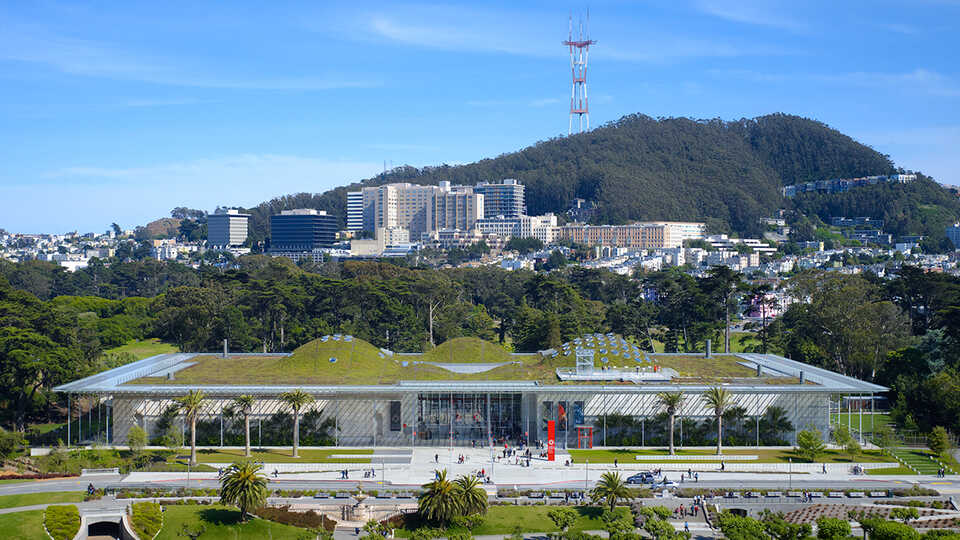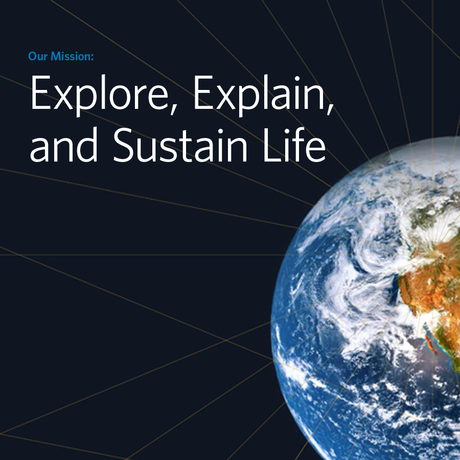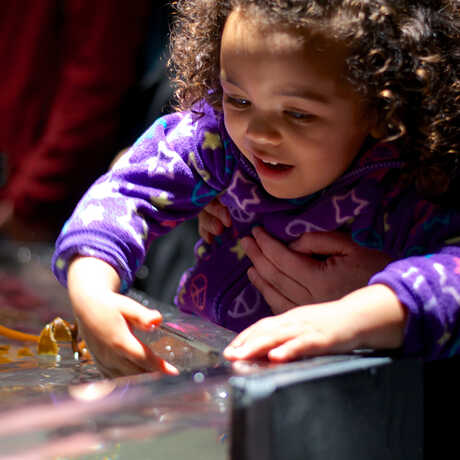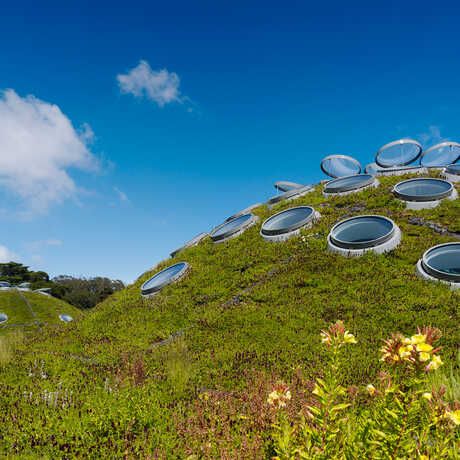Visit an aquarium, planetarium, rainforest, and natural history museum—all under one living roof.
- The Academy uses 30 percent less energy than federal code requires
- Nearly 100 percent of the Academy's electricity comes from clean energy sources (the Hetch Hetchy hydroelectric plant, plus an on-site solar array)
- 70 percent of staff use alternative transportation (public transit, biking, walking) to commute to work, and are compensated for doing so. We provide bicycle parking at the front and back entrances, as well as an electric car recharging station at the loading dock
- Our data center was restructured to save 166,000 kWh of energy per year despite a 52 percent increase in computing capacity
- Our water use is 32 percent below the LEED baseline thanks to waterless urinals and low-flow faucets, toilets, and showerheads



